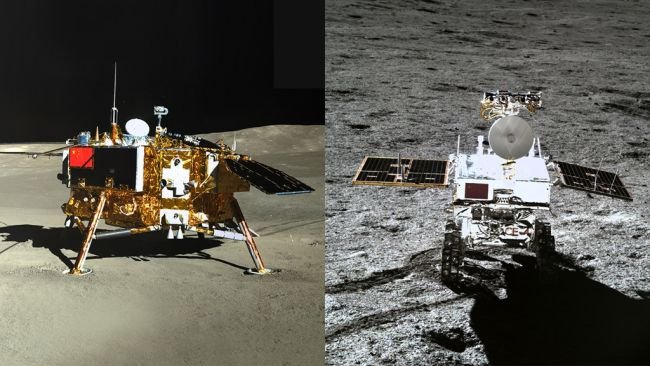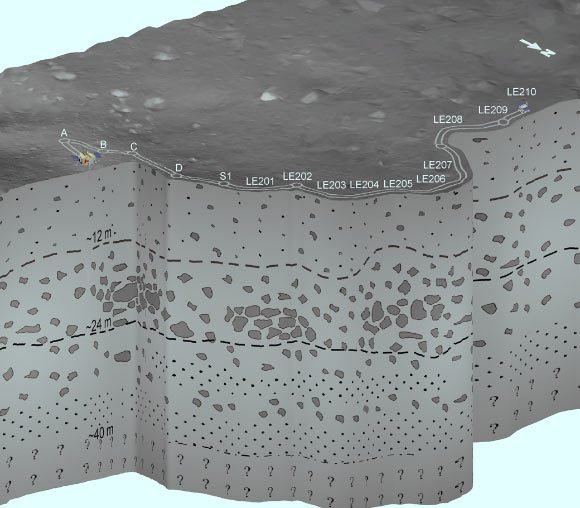Do you remember the news about Chinese spacecraft in the dark side of moon? This mission discovered something about lunar surface.
Chang’e 4 arrives to dark side of moon.Click here
Source: Futurism
Researchers at the Chinese Academy of Sciences in Beijing have started analyzing data collected by the country’s Yutu-2 Moon rover’s ground-penetrating radar. The instrument peered 40 meters (131 feet) below the lunar surface — and found it was sitting on top of a mountain of fine dust.
China’s Chang’e 4 lander touched down on the far side of the Moon in January 2019, becoming the first man-made object to do so. Shortly after, it deployed the rover Yutu-2 from its belly. The rover has been exploring the South Pole-Aitken basin, the largest and oldest crater on the Moon, ever since.
On the left, Chang’e 4 lander and on the right, Yutu-2.

Using high-frequency radar to look beneath the surface, it found that it was sitting on top of 12 meters (39 feet) of fine Moon dust, as detailed in a paper published in the journal Science Advances on Wednesday.
The fine particles were likely the result of many small meteorite collisions and a ton of solar radiation, as New Scientist reports.
Below the dust, between 12 and 24 meters (39 and 79 feet), the rover spotted larger rocks, likely what’s left of larger asteroid and meteorite impacts. Further below that, the rover detected alternating layers of fine and coarser soil.
Lunar soil’s geological structure below Yutu-2.

Most noteworthy is the striking difference between the new readings and the ones taken at Chang’e 4’s landing site, where measurements suggested it landed on top of a dense lava layer buried below the surface, the remains of a volcanic event.


